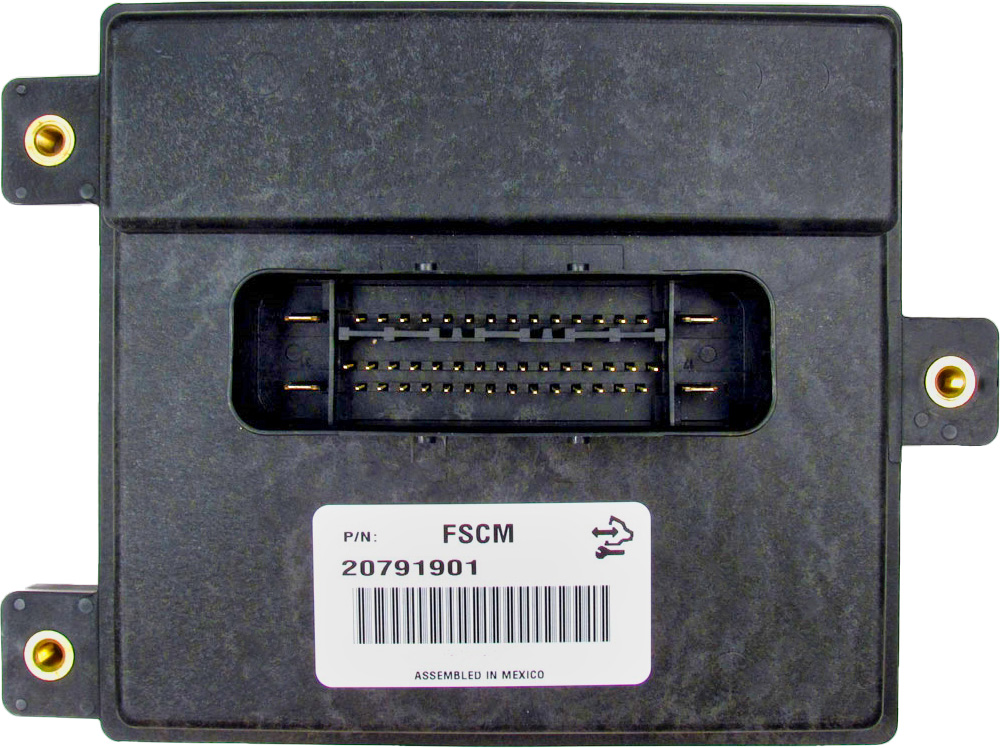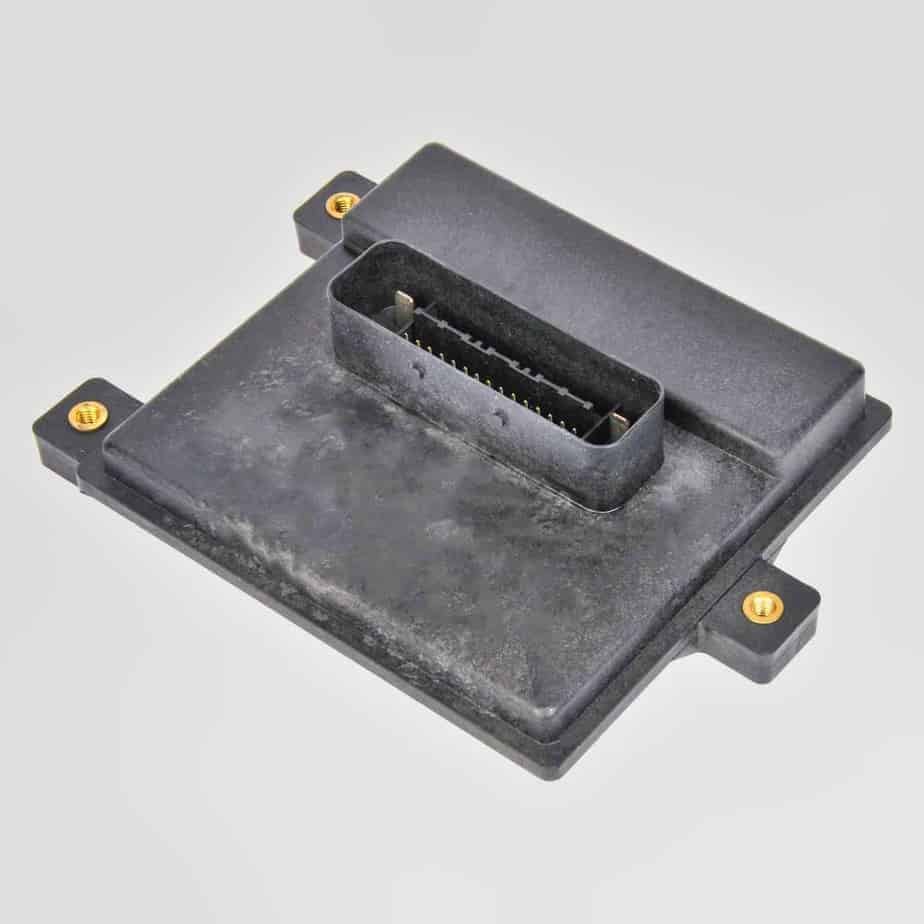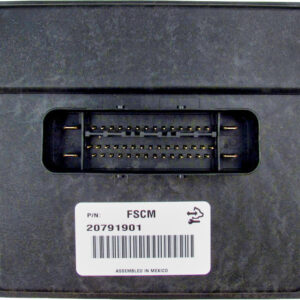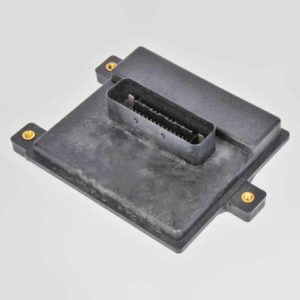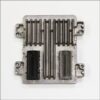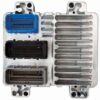Is Your Yukon XL Stalling or Refusing to Start? The Problem Might Not Be Your Fuel Pump.
As a technician with over two decades of diagnostic experience, I’ve seen countless vehicle owners and even professional shops chase their tails, replacing expensive fuel pumps only to find the problem persists. If your 2008-2009 GMC Yukon XL 1500 is experiencing sputtering, hesitation under load, or a dreaded crank-no-start condition, the culprit is often the overlooked Fuel Pump Control Module (FPCM). This small but critical component, often mounted on the frame rail, is responsible for precisely managing the voltage sent to your fuel pump. When it fails, it starves your engine of the fuel it needs to run properly.
From the Diagnostic Bay: The Double Fuel Pump Replacement
I remember a 2008 Sierra 1500 (which uses the same system as your Yukon XL) that came into my shop on a tow truck. The owner was frustrated, having already paid another shop to replace the in-tank fuel pump. The truck ran for a day and then died again. He then replaced it himself a second time, convinced the first replacement part was faulty. Still, no luck. When I hooked up my scan tool, I saw no communication with the FPCM (DTC U0109) and a fuel pump control circuit error (P069E). The module, exposed to years of road salt and moisture on the frame, had corroded internally. We installed a new, VIN-programmed FPCM, and the truck fired up instantly. This story is incredibly common, and replacing the FPCM first can save you hundreds of dollars and immense frustration.
Is Your Yukon XL Exhibiting These Symptoms?
A failing FPCM can mimic a bad fuel pump, but there are key signs to watch for. If you’re experiencing any of the following, this module is the most likely solution.
- ✔ Engine cranks but will not start
- ✔ Vehicle starts and then immediately stalls
- ✔ Severe hesitation or stumbling during acceleration
- ✔ Loss of power and poor engine performance
- ✔ Check Engine Light with codes such as P069E, P0230, P0627, or U0109 (Loss of Communication with FPCM)
- ✔ A buzzing or whining noise from the fuel pump that is inconsistent
The Plug-and-Play Solution: A Pre-Programmed 2008-2009 Yukon XL FPCM
Don’t waste time and money on a dealership visit for programming. We take the hassle out of the repair by flashing this genuine GM-spec Fuel Pump Control Module with the latest software updates specifically for your vehicle. Simply provide us with your Vehicle Identification Number (VIN) after purchase, and we’ll handle the complex programming before it ships. When it arrives at your door, it’s ready for a straightforward, plug-and-play installation, restoring proper fuel pressure and engine performance immediately.
A Straightforward Guide to Installation
Replacing the FPCM is a job most DIYers can handle in their own driveway with basic hand tools. On most GMT900 platform trucks and SUVs like your Yukon XL, the module is located on the driver’s side frame rail, near the spare tire.
- Safety First: Disconnect the negative terminal from your vehicle’s battery to prevent any electrical shorts.
- Locate the Module: Find the FPCM mounted to the vehicle’s frame. It’s a small, black box with an electrical connector and cooling fins.
- Disconnect and Remove: Carefully press the tab on the electrical connector and pull it straight off. Then, remove the bolts or nuts holding the module to the frame. The old module should now be free.
- Install the New Module: Mount your new, pre-programmed FPCM onto the frame and tighten the fasteners securely.
- Reconnect and Finalize: Plug the electrical connector firmly into the new module until it clicks. Reconnect your battery’s negative terminal. Your installation is complete!
Verified Vehicle Compatibility
This module is a direct-fit replacement for a wide range of GM vehicles. Please verify your model and the module’s location noted below. This part is compatible with part numbers: 13501024, 15213110, 20759945, 20850907, 25785013, 25854536, 25866052, and 25967325.
- Acadia 2009: Fuel Pump
- Avalanche 1500 2008-2009: Fuel Pump; (LH frame rail)
- Canyon / Colorado 2009: Fuel Pump; (rear center frame)
- Enclave 2009: Fuel Pump
- Escalade / ESV / EXT 2008-2009: Fuel Pump; (LH frame rail)
- Express / Savana 1500 Van 2008-2009: Fuel Pump; (LH frame rail)
- Hummer H2 2008-2009: Fuel Pump; (LH frame rail)
- Hummer H3 2009: Fuel Pump; (rear frame)
- Outlook 2009: Fuel Pump
- Sierra / Silverado 1500 Pickup 2007: Fuel Pump; (new style, smooth door skin), (LH frame rail)
- Sierra / Silverado 1500 Pickup 2008-2009: Fuel Pump; (LH frame rail)
- Sierra Denali 2008-2009: Fuel Pump; (LH frame rail)
- Suburban 1500 2008-2009: Fuel Pump; (LH frame rail)
- Tahoe 2008-2009: Fuel Pump; (LH frame rail)
- Traverse 2009: Fuel Pump; (rear crossmember)
- Vue 2008-2009: Fuel Pump; (RH rear engine compartment)
- Yukon / Yukon XL 1500 2008-2009: Fuel Pump; (LH frame rail)
Frequently Asked Questions
Why do you need my VIN to program the module?
Your vehicle’s VIN allows us to load the exact GM-specified software and calibrations for your specific engine, transmission, and emissions equipment. This ensures perfect compatibility and performance, eliminating the need for a dealership visit.
What happens if I install it without programming?
An unprogrammed module will not communicate correctly with your vehicle’s Engine Control Module (ECM). This will result in a no-start condition and set communication error codes. Our pre-programming service makes it a true plug-and-play part.
Is this part difficult to replace myself?
Not at all. For most DIYers with basic hand tools, this is a 30-minute job. The module is typically located on the frame rail and is easily accessible once you’re under the vehicle.
Will this fix a Check Engine Light with code P069E?
Yes, P069E (Fuel Pump Control Module Requested MIL Illumination) is one of the most common diagnostic trouble codes indicating a faulty FPCM. Replacing the module is the definitive fix for this code.
Where is this module located on my 2009 Yukon XL 1500?
On the 2008-2009 Yukon XL 1500, the Fuel Pump Control Module is mounted to the inside of the left-hand (driver’s side) frame rail, typically above or near the spare tire area.
